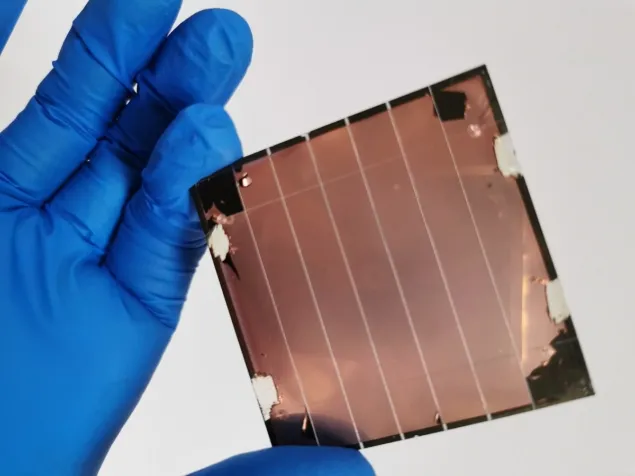Metallic tin ‘reduces’ limitations of perovskite solar cells
Oct 17, 2019 11:28 AM ET

Hybrid organic-inorganic perovskites have garnered significant interest in the solar cell community in light of their excellent optoelectronic properties and low manufacturing cost. Meanwhile, in efforts to produce perovskite solar cells (PSCs) with yet higher efficiencies, considerable steps have been made in developing monolithic tandem solar cells. These incorporate both a wide band gap (often Pb-based) perovskite layer and a narrow band gap (for example, Pb-Sn based) one in order to absorb as much of the solar spectrum as possible.
However, a key species in the narrow band gap layer, Sn2+, is prone to oxidation to Sn4+. This is undesirable as it leads to short charge-carrier lifetimes, thus short diffusion lengths in the perovskite film, which results in a less efficient solar cell.
Metallic tin to the rescue
A group of researchers led by Hairen Tan at Nanjing University demonstrated that metallic Sn could address this limitation by reducing Sn4+ back to Sn2+ when added to the precursor solution; a fine example of a comproportionation reaction (where two reactants, each containing the same element but with different oxidation numbers, yield a single product). Not only does metallic Sn readily reduce Sn4+, but it is also insoluble in the precursor solution until it does so, at which point it is itself oxidized to Sn2+ and becomes part of the perovskite lattice. The authors described this as a “tin-reduced precursor (TRP) solution strategy.”
Characterizing the tin-reduced precursor film
Tan and his colleagues then characterized the films using optical-pump terahertz-probe spectroscopy; a time-resolved technique capable of measuring photoinduced conductivity and charge-carrier mobility. This revealed that the TRP film had an increased charge-carrier mobility and a vastly improved charge-carrier lifetime when compared with the control (non-TRP) film. These results suggest that the density of defects associated with Sn4+ had been decreased.
Subsequently, the researchers fabricated a series of narrow band gap PSCs and optimized their performance by varying the thickness of their TRP layer. As a result of the longer diffusion length, the TRP layer could be made thicker than the control due to its increased light absorption without compromising on carrier collection.
When the researchers incorporated the TRP layer into an all-perovskite tandem cell – alongside a wide band gap Pb-based perovskite layer – they attained a champion efficiency of 24.8 %; impressive for a low-cost, lightweight solar cell such as this. This result adds further impetus to the drive to make the commercialization of perovskite solar cells a reality.
Also read

